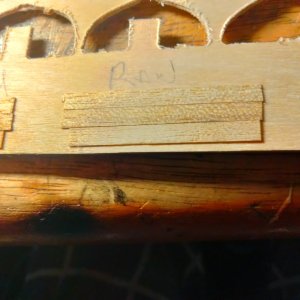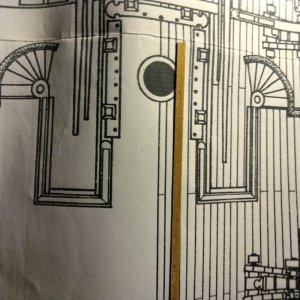have to disagree on several statements here, base on my years of being a Luthier.
I see no disagreement in what we both have written.
This is an edited version of what the GOOGLE AI glomed
Initial state: PVA glue is a liquid polymer where the polyvinyl alcohol chains can easily slip and slide past one another, allowing it to flow. When applied to form a bond as the water evaporates the acetic acid component increases in concentration and breaks ester bonds and introduces acetyl groups, which promotes cross-linking. The cross-linking creates a much stronger bond by forming a more rigid, 3D polymer structure within the glue and between the glue and the surfaces it is bonding. The bond between wood and polymer is a van der Waals bond. A van der Waals bond is a weak intermolecular force of attraction that exists between atoms or molecules due to temporary fluctuations in their electron distributions. These fluctuations create temporary, or instantaneous dipoles (magnet), which can then induce dipoles in neighboring atoms or molecules, resulting in a weak attraction between them. Think of it as being similar to the bond between two magnets.
To push the logic - with a van der Waals bond, the greater is the surface area, the stronger is the bond. Wood with deeper scratches has more surface area. Wood whose pores have no sawdust filling them has more surface area. The farther apart are the two wood surfaces, the more is the volume of the bond a semi rigid plastic that can flex under a sheer force.
This means that a liquid that gets between the molecules can push them far enough apart to break the weak molecular bond. For PVA an effective liquid is isopropyl alcohol.
"any pva glue will work, no point in spending extra money. Your prerogative."
Some of us are more neurotic or compulsive than others. Going an extra step is a need.
Plus, here, even inside, Summer: a sauna - Winter: Death Valley
It would probably be near impossible to find a better primer coat than Shellac. Shellac is a superb finish coat, unless it will be subject to water spills or a glass with water condensation sitting on it. However, if Shellac is applied before a PVA bond, the bond will be PVA to Shellac and Shellac to wood. This is not something that I want.
Applying PVA to a painted surface (a stain is actually a paint) or a varnished surface (usually a polymerized plant oil = Linseed, Tung, Walnut, etc. - or a polymerized synthetic plastic = polyurethane, polycrylic - or lacquer = nitrocellulose) puts a third and intermediating layer that blocks PVA from wood. Not much of a bond with this. It is a better bond than one with finger print oil, way oil, grease, sawdust, wax, etc. involved.
** "Wood whose pores have no sawdust filling them has more surface area." Sanding the surface fills the pores with sawdust. Scraping the surface with a sharp steel or glass edge does not.








